SDLC (Software Development Life Cycle) is the software development life cycle model, which is the life cycle of software from its creation to its scrapping. It emphasizes step-by-step progress, and each stage must be defined, worked on, reviewed, and documented for communication or reference to improve the quality of the software.
Definition: SDLC covers the entire process from the initial stage of the project to the final product delivery and subsequent maintenance, providing a standardized framework to ensure that the development team can collaborate efficiently and have clear goals and measurable results at each stage.
Importance: By providing a clear framework, SDLC helps organizations manage software development projects more effectively and ensures that all key activities are properly handled, thereby reducing errors, lowering costs, and accelerating time to market. In addition, SDLC supports continuous improvement and promotes product quality through feedback loops.
SDLC usually includes the following main phases:
Requirements Analysis: Determine the requirements that the software must meet. Communicate with stakeholders, collect and define the functional requirements of the software, and create a requirements specification as the basis for subsequent work.
Design: Develop software architecture and technical details. Design the overall architecture of the software and develop detailed design documents, including data structure, interface layout, etc.
Implementation/Coding: Write source code to implement the design. Developers write source code based on the design document, and unit testing may be required during implementation to ensure code quality.
Testing: Perform comprehensive testing on the software, including functional testing, performance testing, security testing, etc. Fix any defects found and perform regression testing.
Deployment: Install and configure the software into the production environment. Install the software into the target environment, configure system parameters, and ensure that the software runs properly.
Maintenance: Update and repair the released software. Monitor the software operation, fix problems in time, and perform necessary upgrades and optimizations based on user feedback.
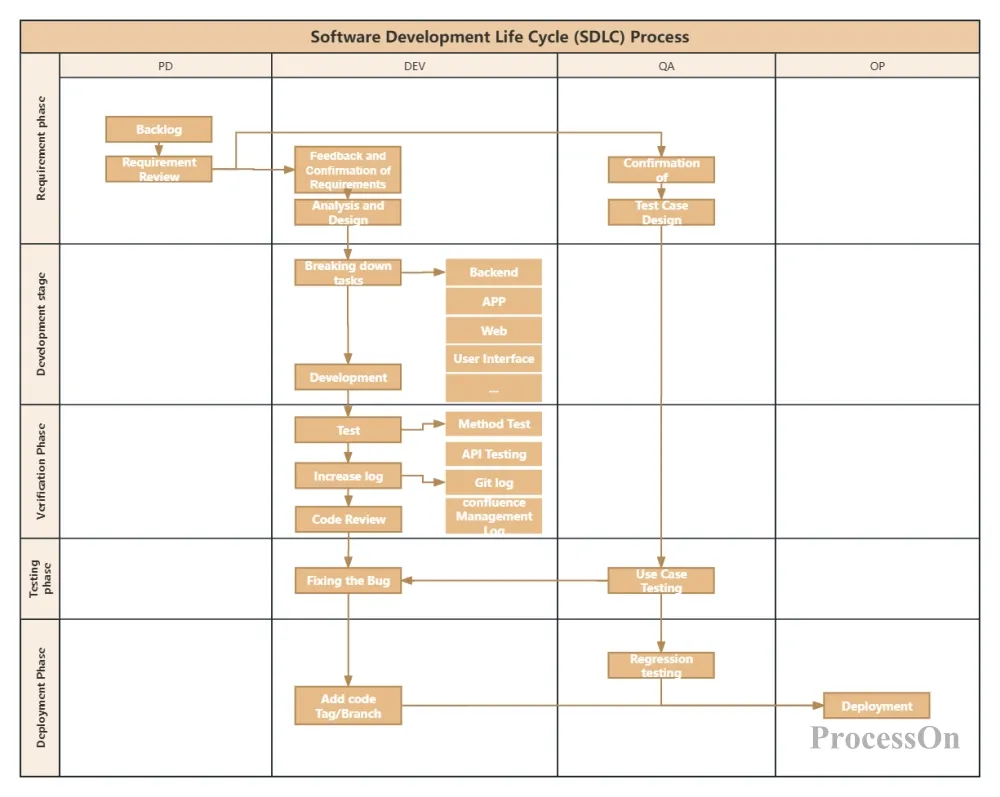
Software Development SDLC Process
There are many SDLC models, the most common ones are the waterfall model, V model, agile development model, etc.
It is a linear SDLC model that defines the activities of the software life cycle as several stages connected in a fixed order, including six basic activities: problem definition and planning, requirements analysis, software design, program coding, software testing, and operation and maintenance. The waterfall model has sequence and dependency, and ultimately results in a software product. However, the waterfall model is not very adaptable to changes in user needs.
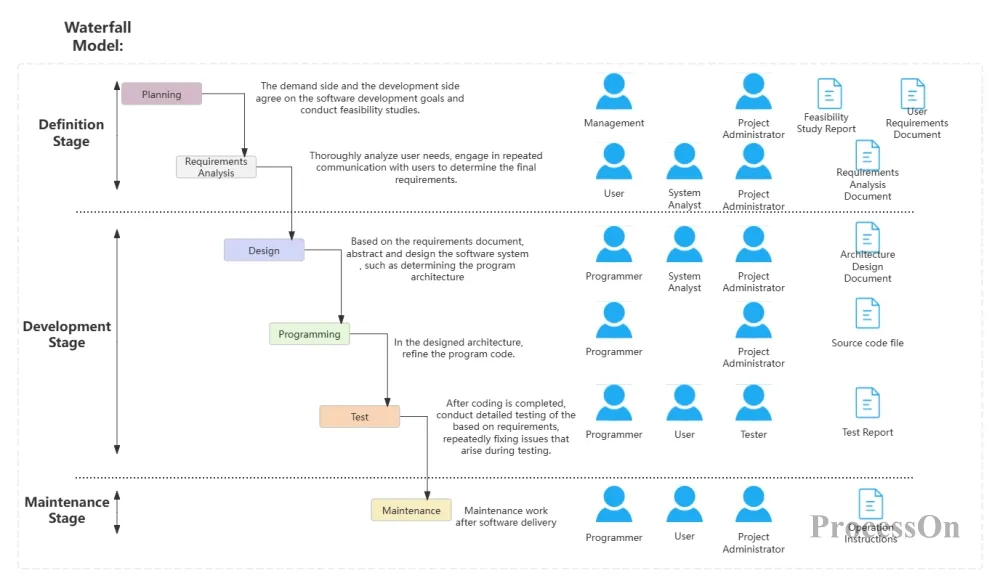
It is a people-oriented SDLC model that focuses on delivering valuable software to customers. The agile development model emphasizes iterative and step-by-step development methods, dividing a large project into multiple small projects that are interconnected but can also run independently, and completing them separately. During this process, the software is always in a usable state, and customers can constantly see the developed software, thereby reducing development risks. The agile development model includes a variety of practice methods such as Scrum and extreme programming.
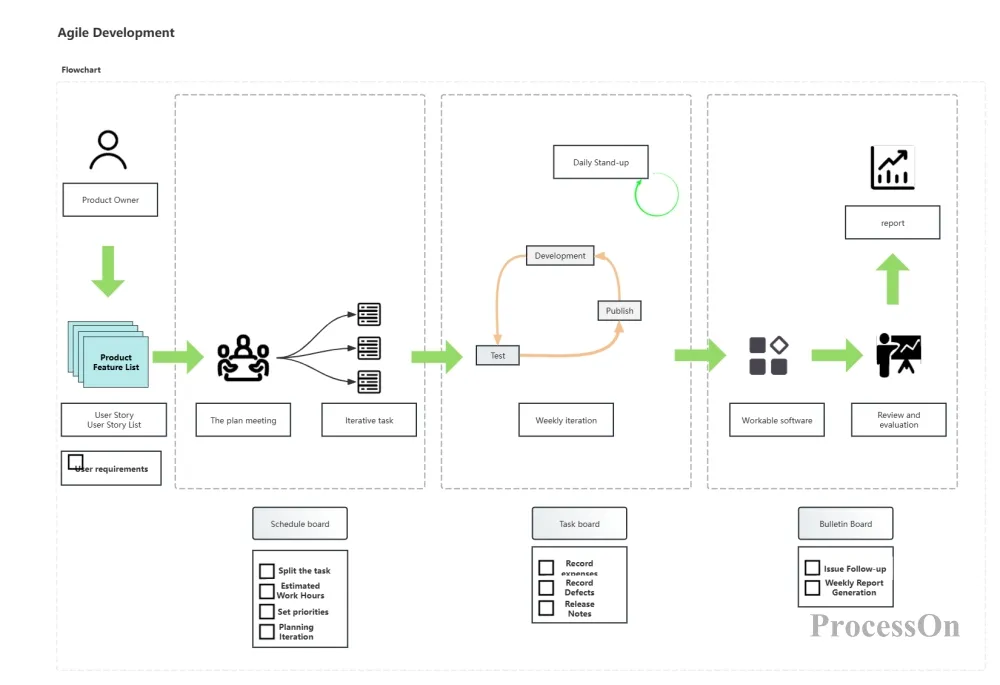
The shape is like the letter V, so it is called the V model. The V model emphasizes strict testing and verification at each development stage to ensure the quality of the software. Unit testing, integration testing, and system testing correspond to the detailed design, outline design, and requirements analysis stages respectively.
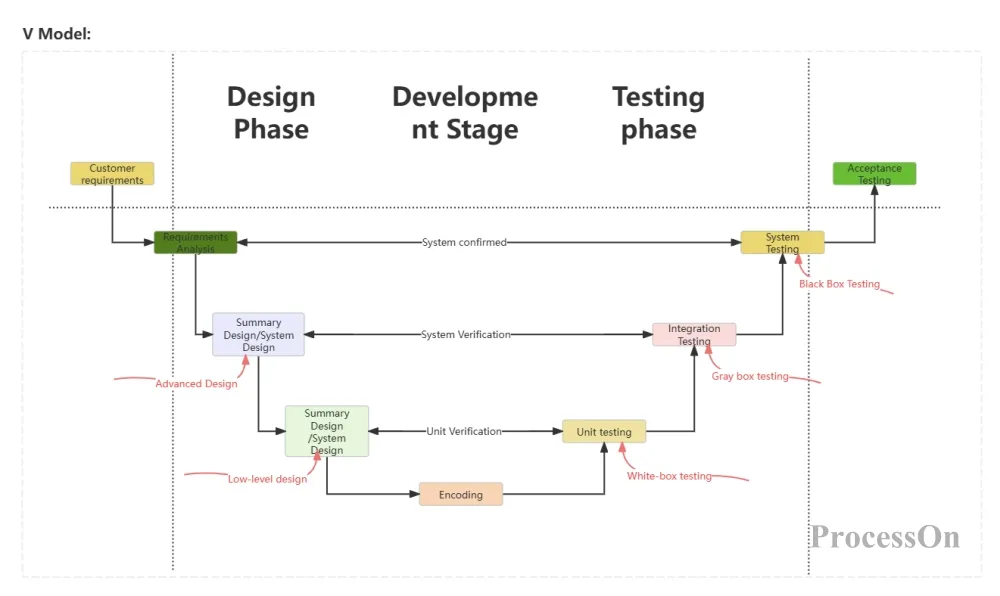
The W model emphasizes the parallelism of development and testing. In the process of software development, testing activities should be carried out simultaneously with development activities to ensure that problems can be discovered and solved in a timely manner at all stages of development. The W model requires testers to test not only the program code, but also the documents generated at each stage, such as the requirements document and design document. This helps to discover problems as early and comprehensively as possible, reducing the cost and risk of later modifications.
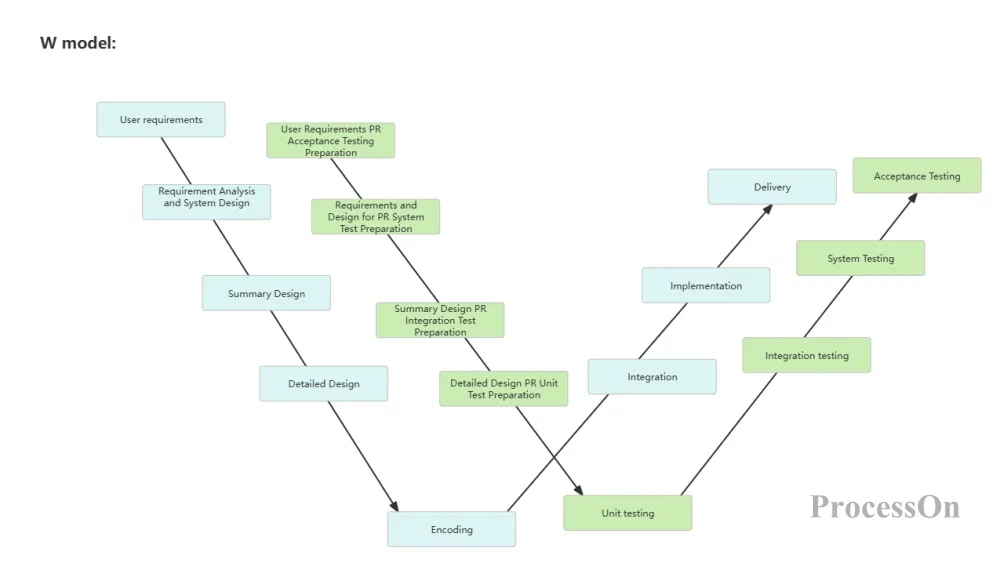
Rapid prototyping is a method of quickly building software prototypes in the early stages of software development so that customers or users can provide feedback and make adjustments. The prototype system usually implements the core functions of the software so that customers or users can test and evaluate it.
Based on feedback from customers or users, developers can adjust and improve the prototype, gradually approaching the final product.
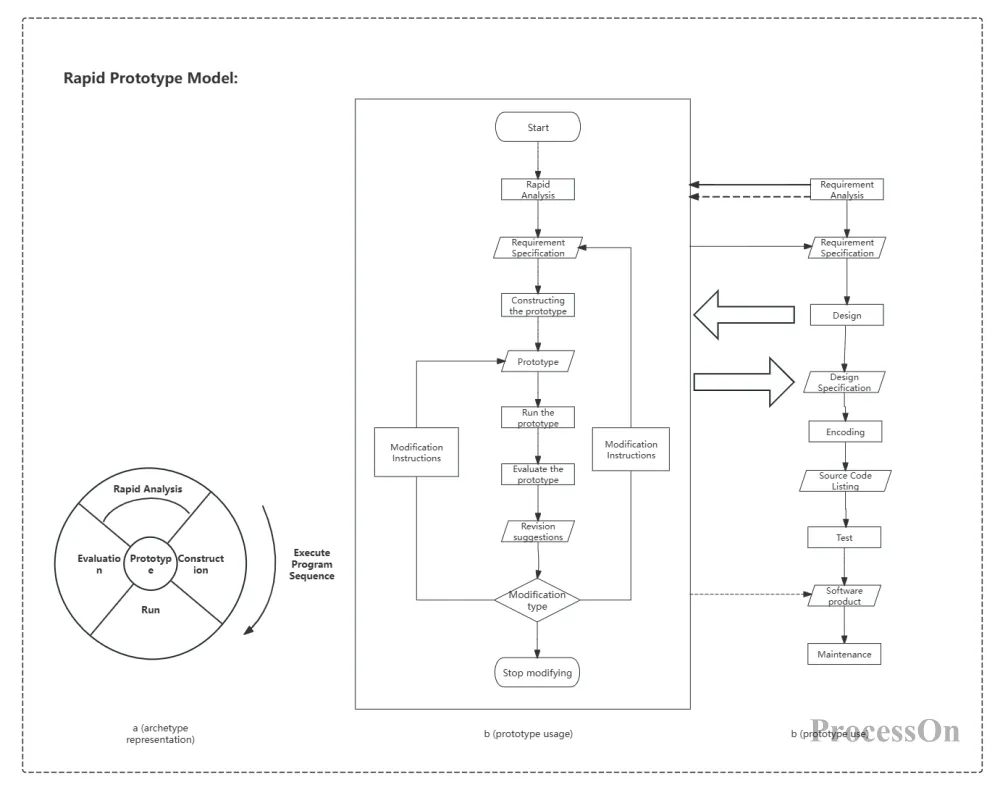
When choosing an SDLC model, you need to consider factors such as the specific needs of the project, the team's capabilities, the scale and complexity of the project, etc. Different SDLC models have different advantages and disadvantages and scopes of application, so you need to choose one based on the actual situation.
Determine the SDLC model: Select an appropriate SDLC model such as waterfall model, iterative model or agile model based on the characteristics and requirements of the project.
Draw a stage diagram and connect the stages : Use a flowchart tool (such as Visio, Lucidchart, etc.) to draw a diagram for each stage, representing the main activities and outputs of that stage , and use arrows to connect the stages to indicate the order and dependencies of the process.
Here we recommend using ProcessOn, a professional flowchart tool that supports online drawing of flowcharts, mind maps, UML diagrams, and other graphics. After entering the ProcessOn official website, click Create New Flowchart, drag the graphics in the graphics library on the left side of the flowchart maker to the canvas, double-click the graphics to add text, and click the "+" on the graphics to create lines to connect different processes.
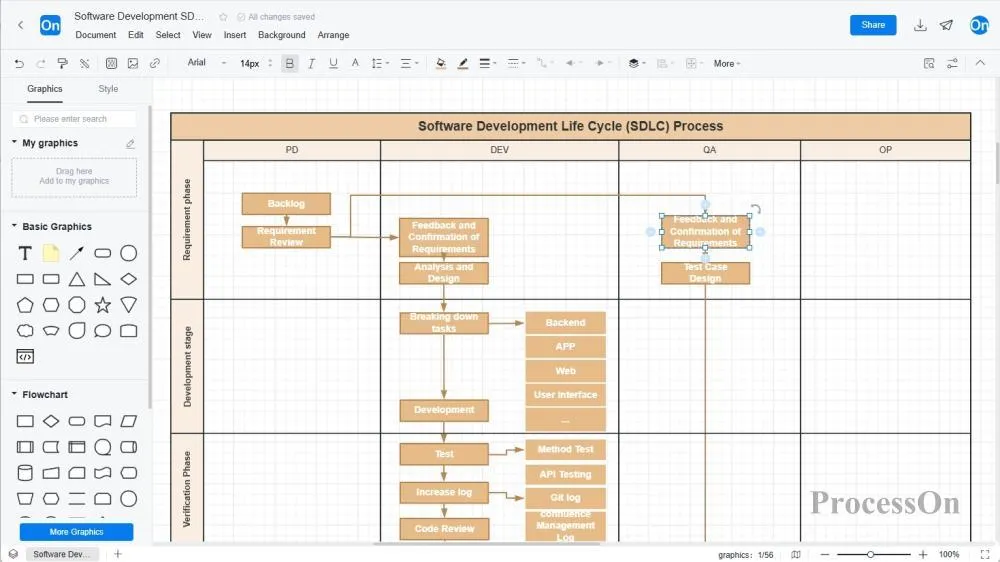
Refine the details : At the end of each phase, you can add documentation and review points to emphasize the importance of these activities. At the same time, according to the specific needs of the project, further refine the flow chart, including sub-activities and outputs of each phase.
Share and collaborate: Select the appropriate format (such as PDF, PNG) to export the flow chart as needed, which can be inserted into corporate documents and shared with team members. You can also directly share and collaborate on the flow chart with colleagues or customers, so that they can view or edit it directly online.
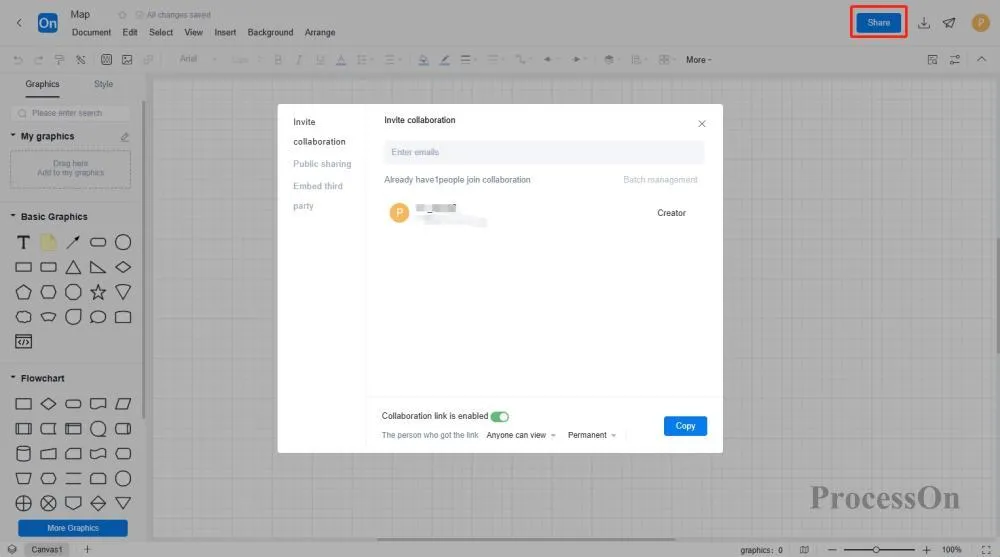
In short, each stage of SDLC is crucial. They are interrelated and interdependent, and together constitute the entire process of software development. Following the standardized process of SDLC can significantly improve the efficiency and quality of software development and reduce the risk of software development project failure.